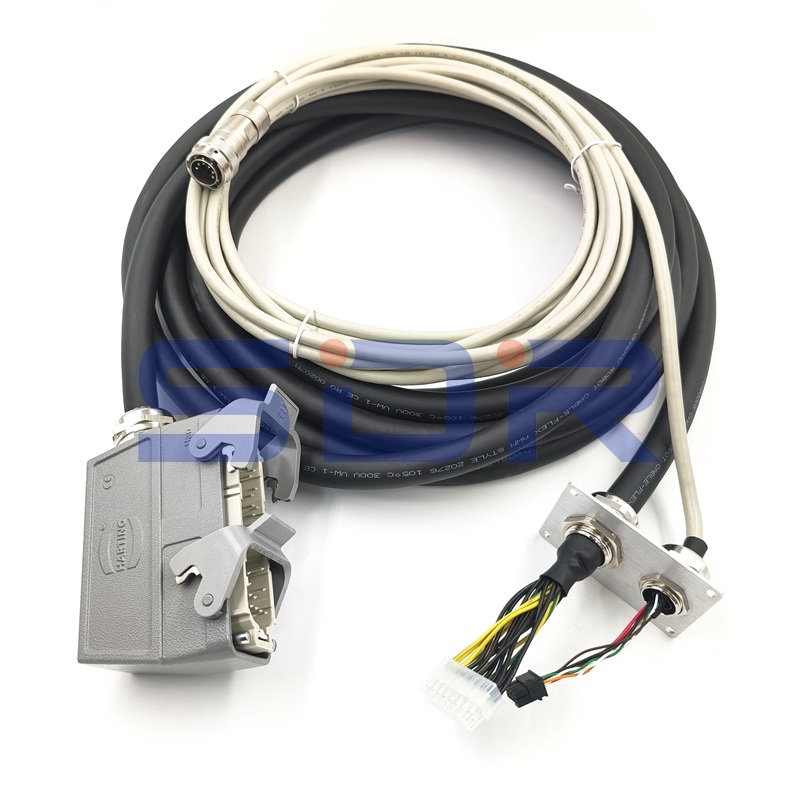As the robotics industry continues to advance, the demand for reliable and efficient wiring and cabling solutions grows. These solutions are critical for power distribution, data transmission, and communication within robotic systems. However, robotics often operates in challenging environments characterized by temperature extremes, moisture, and exposure to various chemicals. This article explores how wire and Cable manufacturers are addressing these environmental challenges to ensure the durability and performance of their products in robotics applications.

In robotics, wires and cables serve as the nervous system, facilitating communication and power supply between different components. Given the diversity of applications—ranging from industrial robots in manufacturing to autonomous drones in outdoor environments—these wiring solutions must withstand various environmental conditions.
The consequences of inadequate wiring can be severe, leading to equipment failure, increased downtime, and safety hazards. Therefore, manufacturers must develop Cables that not only meet performance standards but also excel in harsh environments.
Robots often operate in environments with wide-ranging temperatures, from the cold of a freezer in food processing to the heat of a manufacturing plant. Wire and cable manufacturers are addressing this challenge through:
Temperature-Resistant Materials: Manufacturers use materials with high thermal stability for insulation and jackets, such as silicone, PVC, or TPE (thermoplastic elastomer). These materials can withstand temperature fluctuations without degrading.
Enhanced Insulation: Multi-layer insulation designs can provide additional protection against heat and cold. For instance, cables designed for high-temperature applications may incorporate materials like fluoropolymers, which maintain their integrity under extreme conditions.
Testing and Certification: Manufacturers often subject their products to rigorous testing, ensuring they meet industry standards for temperature resistance. This guarantees that the wires and cables will function reliably in specified temperature ranges.
Moisture is another significant environmental challenge for robotics, particularly in industries like food processing, pharmaceuticals, and outdoor applications. To combat moisture-related issues, manufacturers implement several strategies:
Waterproof and Sealed Connectors: Utilizing connectors that are rated for IP67 or higher ensures that water cannot enter the cable assembly, preventing short circuits and corrosion.
Hydrophobic Materials: Some manufacturers employ materials that repel water and prevent moisture absorption. For instance, specialized coatings or treatments can enhance the moisture resistance of cables.
Drainage Solutions: In certain applications, implementing drainage solutions in the cable design can help direct moisture away from sensitive components, further safeguarding against damage.
Robots operating in environments where they are exposed to chemicals—such as manufacturing plants, laboratories, and outdoor fields—require cables that can resist degradation. Manufacturers are addressing this need through:
Chemical-Resistant Insulation: Using materials specifically designed to withstand exposure to oils, solvents, acids, and other chemicals is crucial. For example, polyethylene and polyurethane are often used for their chemical resistance properties.
Testing Against Industry Standards: Manufacturers conduct extensive chemical compatibility testing to ensure their cables perform reliably when exposed to specific chemicals. This process helps identify suitable materials and designs for various applications.
Custom Solutions: Many manufacturers offer Custom Cable solutions that can be tailored to meet the unique requirements of an environment, including chemical exposure. This flexibility allows companies to find the best fit for their specific applications.
Advancements in wire and cable technology are helping to overcome environmental challenges more effectively. Some of the recent innovations include:
Smart Cables: Integrating sensors into cables can provide real-time monitoring of environmental conditions, alerting operators to potential failures before they occur.
Self-Repairing Materials: Emerging materials that can self-repair when damaged are being explored to enhance the durability of cables in harsh environments.
Lightweight and Flexible Designs: Developing cables that are both lightweight and flexible can help improve mobility and reduce wear and tear in robotics applications.
As the robotics industry expands, addressing environmental challenges in wire and cable applications remains critical for ensuring reliability and performance. Manufacturers are continually innovating to develop solutions that withstand temperature extremes, moisture, and chemical exposure. By leveraging advanced materials, robust design practices, and extensive testing, they provide wiring solutions that support the growing demands of modern robotics. As these technologies evolve, they will play a crucial role in enabling more resilient and efficient robotic systems across various industries.